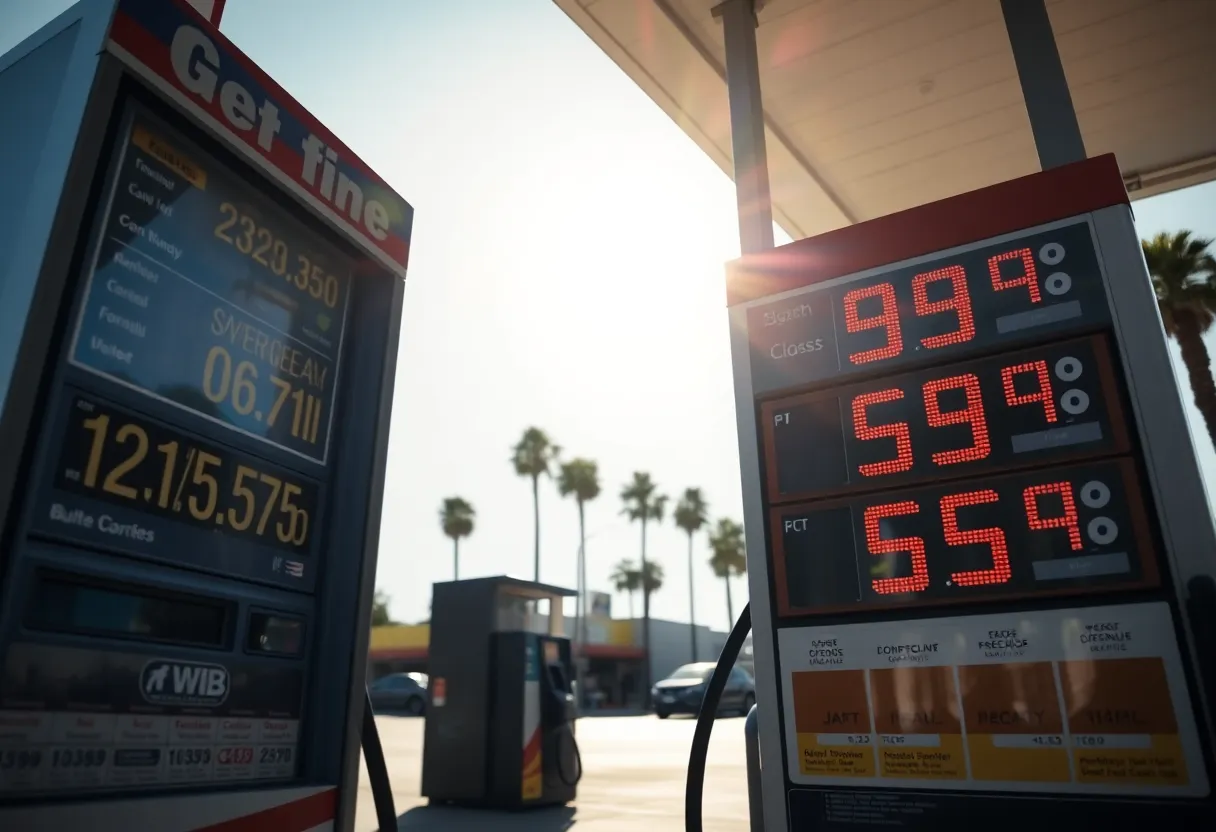News Summary
Starting July 1, California drivers will contend with increased gas prices attributed to new taxes and regulations, including a rise in the excise tax and a controversial Low Carbon Fuel Standard. Estimates suggest prices could soar to $6 per gallon, placing financial strain on residents. With political responses and petitions in motion, the debate continues over the balance between environmental goals and economic impact.
California drivers are set to face rising gas prices starting July 1 due to new taxes and regulations implemented by the state. The increase includes a 1.6 cents per gallon rise in the state’s excise tax, which, according to estimates, could drive gas prices up to $6 per gallon. This rise is attributed primarily to the effects of the state’s Low Carbon Fuel Standard program approved by the California Air Resources Board in November, projected to contribute significantly to escalating fuel costs.
State Senate Minority Leader Brian Jones has indicated that the new fuel standard could add as much as 65 cents per gallon to the price of gasoline. In combination with the increased excise tax, the overall hike could lead to annual costs for California drivers ranging from $600 to $1,000. Furthermore, ongoing tensions in the Middle East and the recent closure of two refineries are expected to add additional pressure, potentially pushing prices as high as $8 per gallon by the end of 2026.
In response to these projected increases, an online petition initiated by Jones calling for the repeal of the Low Carbon Fuel Standard has gained significant traction, garnering over 25,000 signatures. Meanwhile, California Governor Gavin Newsom has countered claims regarding the anticipated price spikes by releasing a fact-check memo. His office estimates the increases due to the new taxes and regulations will be considerably lower, ranging between 5 to 8 cents per gallon.
Details of the New Regulations
The updated Low Carbon Fuel Standard aims to reduce greenhouse gas emissions and imposes stricter regulations on fuel producers. Its previous iteration added approximately 9 cents per gallon in costs to consumers, while the new version is estimated to contribute an additional 5 to 8 cents per gallon. However, critics have labeled the increases as “price gouging,” accusing the administration of overreaching in its climate initiatives.
In an effort to mitigate the financial burden, new legislation has been introduced by Democratic lawmakers that aims to cap fuel credit prices, intending to prevent sudden spikes at gas stations. Despite these legislative efforts, conflicting views have arisen over the effectiveness and necessity of the fuel standard, leading to debates over environmental goals versus economic viability.
Current Gas Prices and Market Trends
As of now, California has the highest gasoline prices in the nation, averaging around $4.484 per gallon. A recent survey conducted in San Diego on June 30 revealed gas prices at stations in the area ranged from $3.99 to $5.39 per gallon. These figures suggest disparities in pricing across regions, influenced by local market conditions and competition among providers.
Future Implications for California Residents
The combination of new taxes, ongoing geopolitical tensions, and changes in refinery operations could have lasting implications for California’s economy and its drivers. The California Energy Commission is currently in discussions with potential buyers to keep refineries operational amid the worry of further closures that could restrict fuel supply, potentially leading to even higher prices in the near future.
As the implementation date of July 1 approaches, both drivers and policymakers face uncertainty regarding the future of fuel costs in California. With conflicting reports on anticipated price increases, Californians are encouraged to stay informed and prepared for any significant shifts in the state’s gas market.
Deeper Dive: News & Info About This Topic
- LAist
- Wikipedia: California
- Politico
- Google Search: California gas prices
- CBS News
- Google Scholar: California gas taxes
- San Francisco Chronicle
- Encyclopedia Britannica: gasoline prices
- SFGate
- Google News: California fuel regulations

Author: STAFF HERE HOLLYWOOD
The Hollywood Staff Writer represents the experienced team at HEREHollywood.com, your go-to source for actionable local news and information in Hollywood, Los Angeles County, and beyond. Specializing in "news you can use," we cover essential topics like product reviews for personal and business needs, local business directories, politics, real estate trends, neighborhood insights, and state news affecting the area—with deep expertise drawn from years of dedicated reporting and strong community input, including local press releases and business updates. We deliver top reporting on high-value events such as the Hollywood Bowl summer concerts, the Hollywood Christmas Parade, film premieres at TCL Chinese Theatre, and festivals at the Magic Castle. Our coverage extends to key organizations like the Hollywood Chamber of Commerce and Visit Hollywood, plus leading businesses in entertainment, dining, and tourism that define the local economy. As part of the broader HERE network, including HERELosAngeles.com, HEREBeverlyHills.com, HEREAnaheim.com, and HEREHuntingtonBeach.com, we provide comprehensive, credible insights into Southern California's dynamic landscape.





